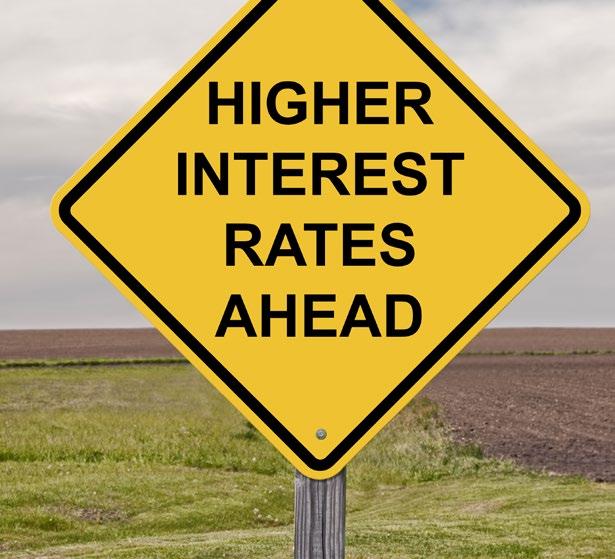
2 minute read
Minimise the interest rate hike
Roll over finance payments early to minimise interest rate slug
When RBA Governor, Philip Lowe announced on the 3rd May 2022 that the official cash rate would rise by 0.25%, it was clear to most that this was just the first of many rises likely to follow over the next 12–18 months.
By Miles Beamish, Partner, Equipment Finance at Finlease
Inflation is the biggest threat to interest rate rises and with the RBA’s target band of between 2% to 3%, the recent inflation figure of 5.1% confirmed the cash rate had to rise. The critical path here is for the RBA to position the cash rate so that economic growth and housing affordability is sustainable versus a boom / crash approach.
The impacts of Covid (pent up demand and global supply issues), substantially increased import costs (ie. shipping container costs have gone through the roof) along with the knock-on effects of increased fuel and power costs associated with the war in Ukraine has led to an undersupply of key materials in many areas and hence significant inflationary pressures. Another contributing factor to the surging inflation in Australia has been the shortage of labour and materials in our construction/home building industry.
The single largest lever used by the RBA to try and calm these inflationary pressures is to raise interest rates. The last rate rise we had, prior to this new rate cycle, was way back in November 2010 when it moved the official cash rate to 4.75%. Since then there has been a long-continued decline to just 0.10% (April 2022).
Longer term interest rates are a good indicator of where short/medium term interest rates are heading and it is worth looking at the current trend in fixed interest rates. These movements are usually a prelude to RBA cash rate decisions as these longer-term markets tend to ‘price in’ these future rises now. The primary longer term rate indicators are the 3 and 5 years fixed ‘SWAP’ rates that most of the financiers use as their ‘cost of funds’ base to price their money to the SME business markets. These rates have already increased by over 3% since October 2021 — basically any equipment financing you did in (say) August 2021 would now cost you at least 3% more now if you were to fund the same deal.
Various Bank Economists forecast further RBA cash rate rises totalling anywhere between 1–2% for the remaining 6 months of 2022 alone.
Now may be a good time to look at any finance balloon/residual payments you have falling due over the next 12 months and to look at rolling them over earlier. Many clients mistakenly believe they must wait until their balloons/residuals are due before they can pay them out or rollover the finance for a further term. Most funders will consider (using a low doc assessment) rolling over balloons within the last 6 months of the end of the term and some will consider as far out as 12 months.
So, understanding that the RBA will continue to raise the official cash rate while these high inflationary numbers remain, and that there are many volatile factors contributing to this pressure (war, global and local supply issues, pent up consumer demand…) then it is a brave person to make the call when these longer-term interest rates will ‘plateau’.

Finlease sources competitive equipment finance rates. Find out more at www.finlease.com.au.










